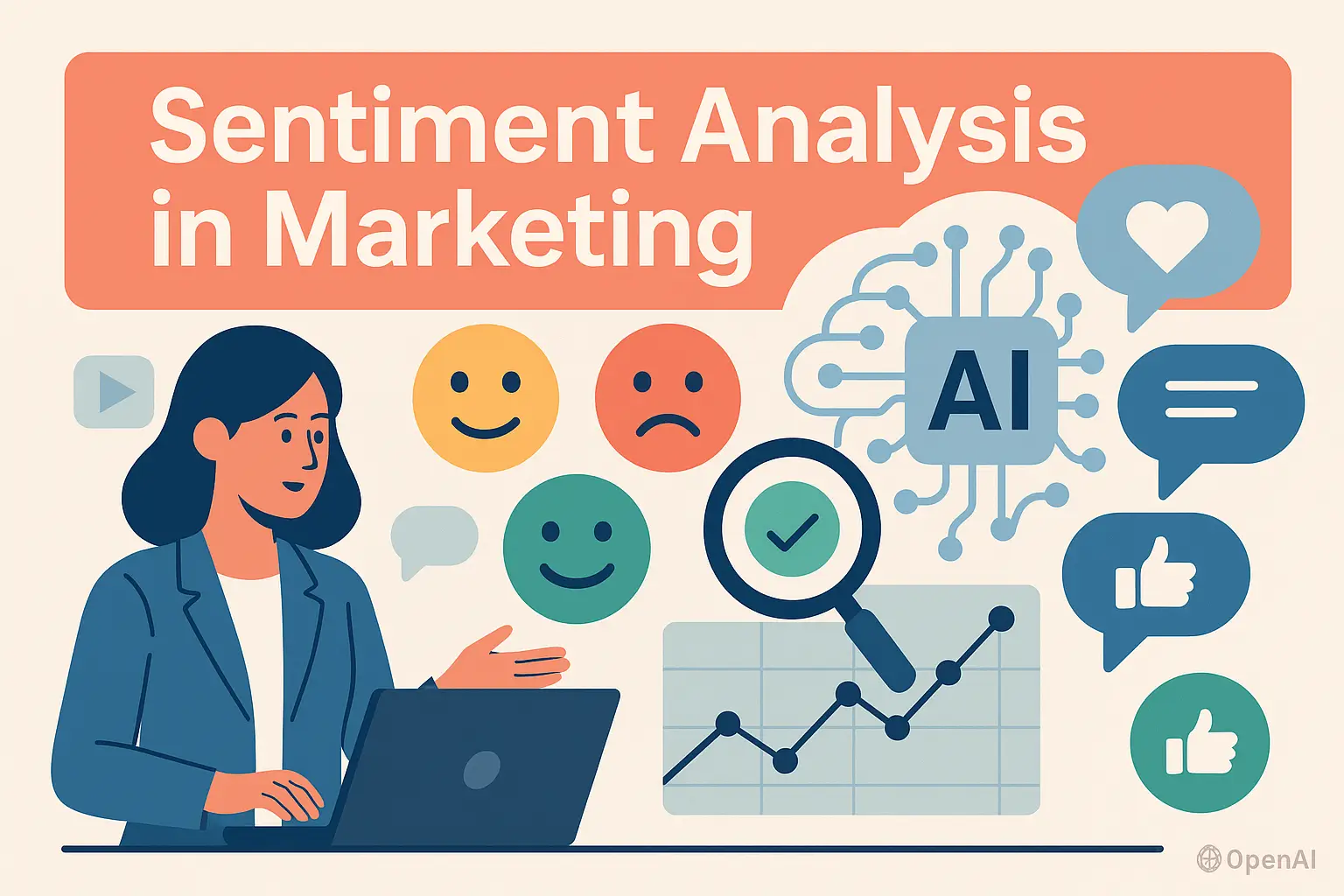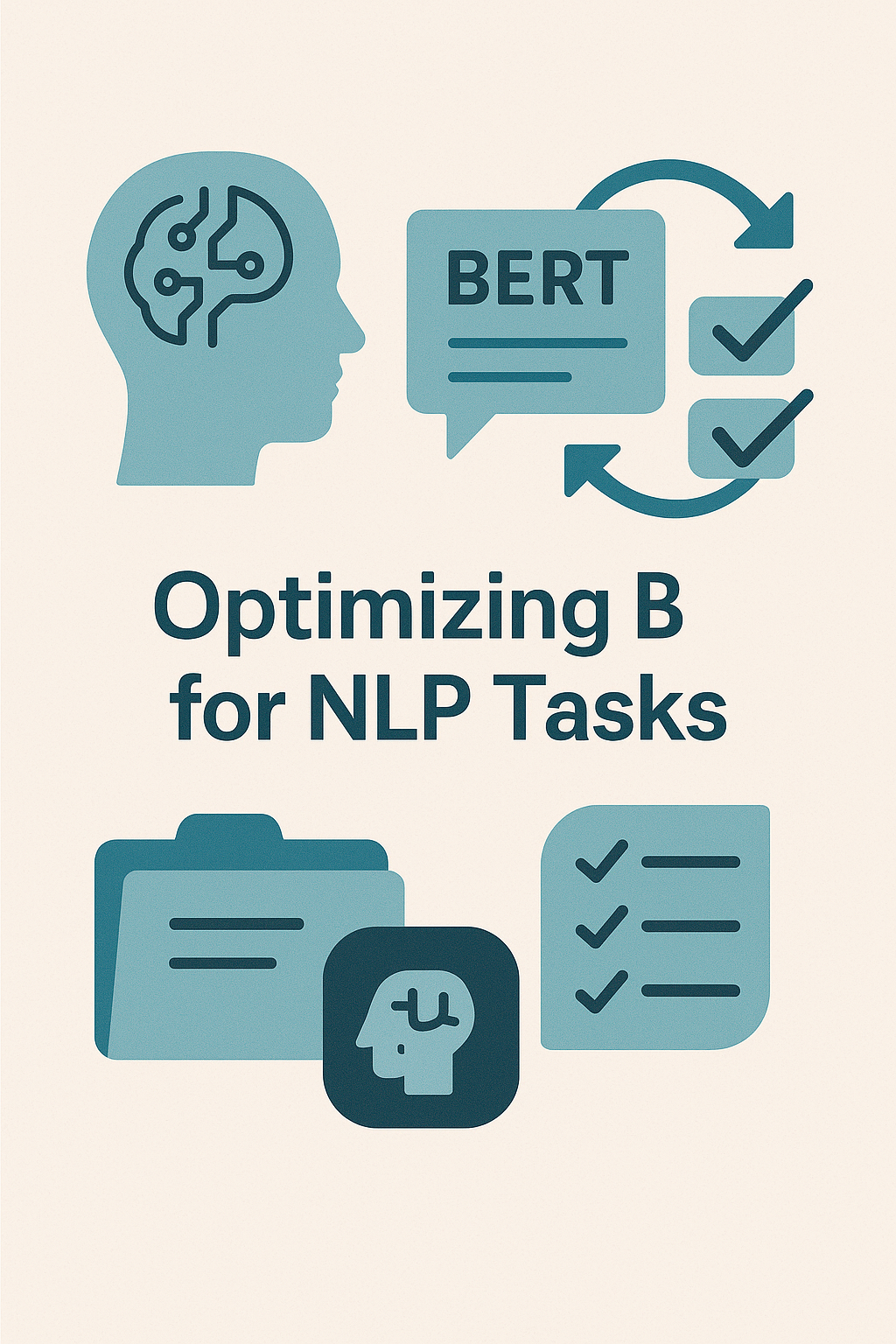Introduction to Sentiment Analysis in Marketing
Sentiment analysis is a powerful tool that helps businesses understand customer opinions, emotions, and attitudes toward their products, services, or brand. By analyzing customer feedback, social media comments, reviews, and other data sources, marketers can gain valuable insights into how their audience perceives their brand.
Formula for sentiment score calculation:
\\[ Sentiment\:Score = \\frac{Positive\:Words - Negative\:Words}{Total\:Words} \\]
This score helps determine whether a piece of content (e.g., a review or tweet) has a positive, negative, or neutral sentiment. Check out our article on Natural Language Processing in Marketing to learn how NLP plays a critical role in sentiment analysis.
Why Sentiment Analysis Matters in Marketing
Understanding customer sentiment allows businesses to tailor their marketing strategies and improve their products or services. Here are some key benefits of sentiment analysis in marketing:
- Customer Feedback: By analyzing sentiment, businesses can quickly identify areas of improvement and address negative sentiments before they escalate.
- Brand Reputation Management: Monitoring sentiment helps brands understand public perception and make necessary adjustments in their communication strategy.
- Improved Customer Engagement: Businesses can create more personalized marketing campaigns by understanding their customers' emotions and preferences.
Real-World Example: A company tracks sentiment around a product launch, discovering that customer sentiment is mostly negative. The company uses this information to release a patch to address customer concerns, improving sentiment over time.
For further insights into brand reputation, read our post on Brand Reputation Management Strategies.
How Sentiment Analysis Works in Marketing
Sentiment analysis typically involves using machine learning algorithms and natural language processing (NLP) to identify and categorize opinions expressed in customer reviews, social media posts, or surveys.
Here's a basic sentiment analysis workflow:
- Data Collection: Collect textual data from social media, customer reviews, or surveys.
- Text Preprocessing: Clean the text by removing stop words, punctuation, and irrelevant content.
- Sentiment Classification: Classify the text as positive, negative, or neutral using sentiment analysis models.
- Sentiment Aggregation: Aggregate sentiment data to identify trends and patterns over time.
Formula for sentiment classification accuracy:
\\[ Sentiment\:Accuracy = \\frac{True\:Positive\:Classifications}{Total\:Classifications} \\]
In practice, companies use tools like IBM Watson NLU or Google Cloud Natural Language API to analyze sentiment at scale.
For more details on NLP tools, check out our post on NLP Tools for Marketing.
Practical Example: Analyzing Sentiment from Social Media
Let’s walk through a practical example of sentiment analysis using social media posts. A marketing team at a retail company wants to analyze customer sentiment regarding a recent product launch. The team collects tweets and Facebook comments about the product and runs sentiment analysis using a machine learning model.
Formula for social media sentiment analysis:
\\[ Social\:Sentiment = \\frac{Positive\:Mentions - Negative\:Mentions}{Total\:Mentions} \\]
The result could show that while a majority of the mentions are positive, a significant portion is negative, indicating areas for improvement in the product or marketing campaign.
For further reading on social media sentiment analysis, explore our article on Social Media Analytics for Marketing.
Technologies and Tools for Sentiment Analysis
Several tools and technologies are available to automate sentiment analysis in marketing:
- Natural Language Processing (NLP) Tools: Tools like spaCy and NLTK are used to process and analyze text data for sentiment analysis.
- Machine Learning Models: Supervised learning models are trained on labeled datasets to classify text as positive, negative, or neutral.
- Sentiment Analysis APIs: Services like TextBlob and Microsoft Azure Text Analytics offer easy-to-integrate APIs for sentiment classification.
Real-World Example: A company uses TextBlob to analyze sentiment in customer service interactions. The tool categorizes feedback into positive, negative, or neutral and helps the company improve customer satisfaction.
For more on AI in customer service, check out our post on AI in Customer Service.
Challenges of Sentiment Analysis in Marketing
While sentiment analysis offers great potential, it also comes with challenges that marketers must address:
- Ambiguity in Text: The same words can have different meanings depending on the context, making it difficult for sentiment analysis models to interpret.
- Irony and Sarcasm: Sentiment analysis tools often struggle to detect sarcasm or irony in text.
- Language and Cultural Variations: Sentiment can differ by language and culture, making it hard to accurately analyze global data.
Formula for handling ambiguity in sentiment analysis:
\\[ Ambiguity\:Score = \\frac{Misclassified\:Sentiments}{Total\:Sentiments} \\]
To minimize these challenges, companies invest in more advanced NLP models and fine-tune their algorithms. For more on how to handle NLP challenges, read our article on NLP Challenges and Solutions.
Conclusion and Future of Sentiment Analysis in Marketing
Sentiment analysis is a crucial tool for understanding customer feelings and improving marketing strategies. By integrating sentiment analysis into marketing workflows, businesses can monitor brand perception, enhance customer engagement, and make data-driven decisions.
Next Steps: If you're ready to implement sentiment analysis in your marketing campaigns, consider starting with social media data and feedback from customer reviews. Gradually scale it to analyze a broader range of customer interactions.
For a comprehensive guide on implementing sentiment analysis, check out our Guide to Sentiment Analysis in Marketing.








